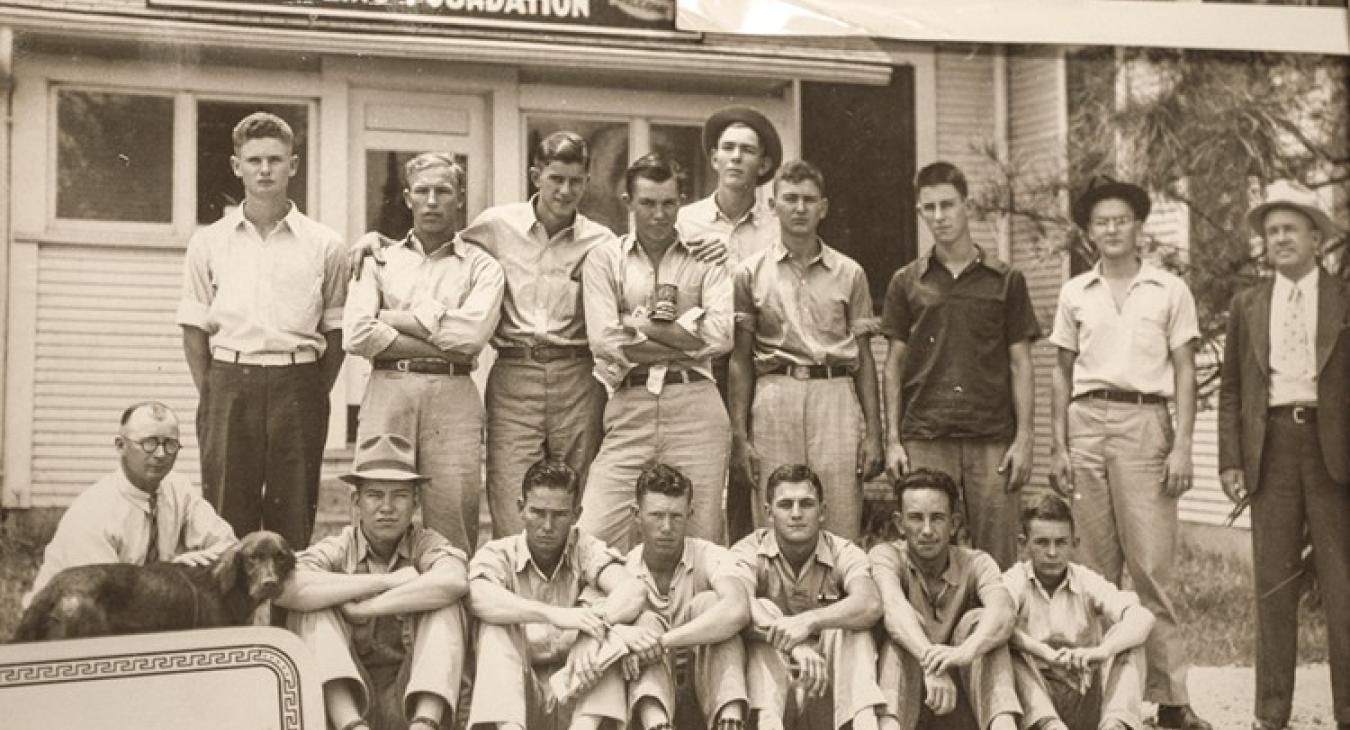A group of young men, ages 17-22, who took part in the The Luling Foundation's training school established in March of 1934. The one-year program taught hands-on classes in poultry, dairy, livestock and general farming. Historic photos courtesy of the Luling Foundation
BY CLAYTON STROMBERGER
As you drive down quiet, tree-lined Mulberry Avenue out on the southwestern edge of Luling, just past the high school football stadium, you come to an unadorned metal archway that reads, “The Luling Foundation,” and below that, “Est. 1927.” Passing under the arch, you’re simultaneously going backward and forward in time.
This area of gently rolling land nestled above the winding San Marcos River is both a historical site with a unique role in Caldwell County’s past and a working farm of tomorrow where cutting-edge practices are shared with the next generation of farmers and cattle ranchers.
The Luling Foundation exists because of Rafael Rios No. 1, the most famous oil well in the county’s history. Thanks to that well, drilled in 1922 after six dry misses, Yankee entrepreneur-turned-wildcatter Edgar B. Davis hit black gold and became even more of a millionaire than he’d been upon making his first two fortunes in the shoe and Indonesian rubber businesses.
Guided by the devout Congregationalist faith of his Massachusetts upbringing, Davis believed that “gracious Providence” had directed him to seek oil near Luling. That same spirit led him to share much of his newfound wealth through philanthropic gifts to the community he’d come to know and care for during his days of searching.
Touched by the plight of area farmers who appeared trapped in a cycle of diminishing returns due to reliance on the single crop of cotton, Davis created the Luling Foundation as an agriculture demonstration farm and endowed it with $1 million (the equivalent of more than $14 million today).
Over the decades, the Luling Foundation — which serves Caldwell, Gonzales and Guadalupe counties — has tested and shared best practices for growing row crops, pecans and winter forage crops for livestock, while raising, at various times, goats, dairy cows, turkeys and, since 2000, Angus cattle.
Produce from its gardens have graced many a Luling dinner table, and generations of Texas schoolchildren have enjoyed a daylong taste of farm life on memorable field trips. The foundation gives $15,000 in scholarships annually to high school students to pursue learning in agriculture, health care and trade/vocational studies.
The 1,100-acre facility is run by manager Michael Kuck and three other full-time staffers. The foundation is led by a seven-member board of directors. Board chair Gary Dickenson of Caldwell County first visited the farm at a 1984 field day, and has been a director since 2000.
Thank a farmer — celebrate National Ag Day
It’s a good day to reflect on and appreciate the contributions of American farmers, who receive just 14.8 cents, on average, of every food dollar consumers spend throughout the year, according to the National Farmers Union. The remaining 85 percent of food revenue goes to marketing, processing, wholesale, distribution and retail costs.
National Ag Day coincides with the beginning of cotton, corn, sorghum and soybean planting season for many Texas farmers. Think of the wide variety of commodities and products those crops alone make possible — clothing and other textiles, animal feed, renewable fuels such as ethanol and many convenience foods.
With each U.S. farmer feeding an average of about 165 people in exchange for a modest financial reward and, frequently, a lack of recognition, take a moment to honor the hard work they do for our country’s benefit and that of others around the world. Agriculture is America’s No. 1 export, a vital contributor to sustaining a healthy economy.
So support your local farmers’ markets, farm-to-table restaurants and spread the word about your favorite local farms.





